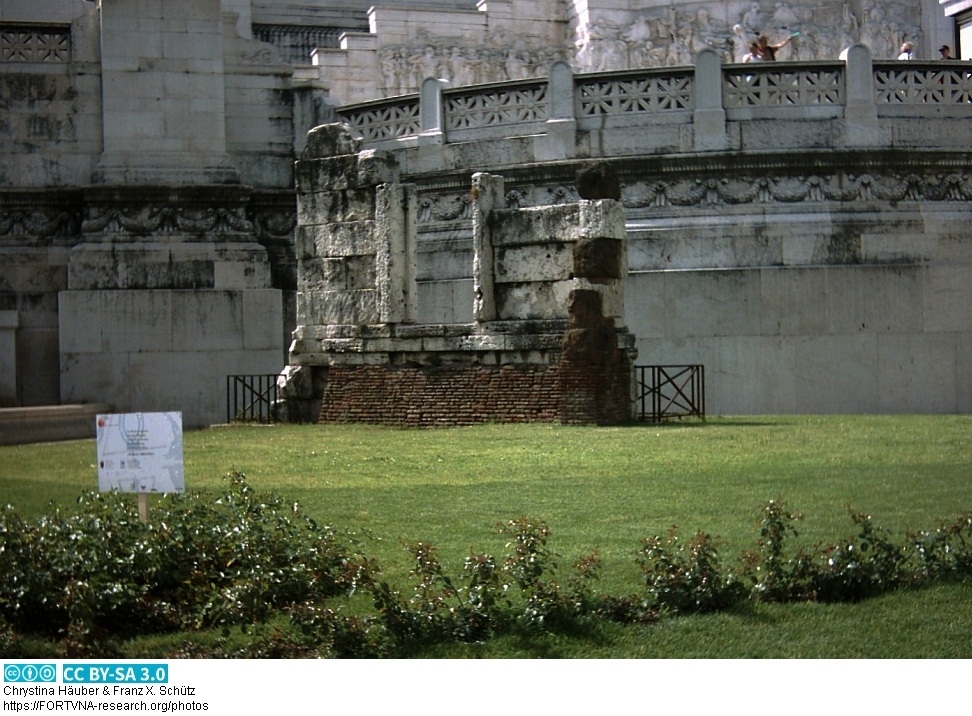
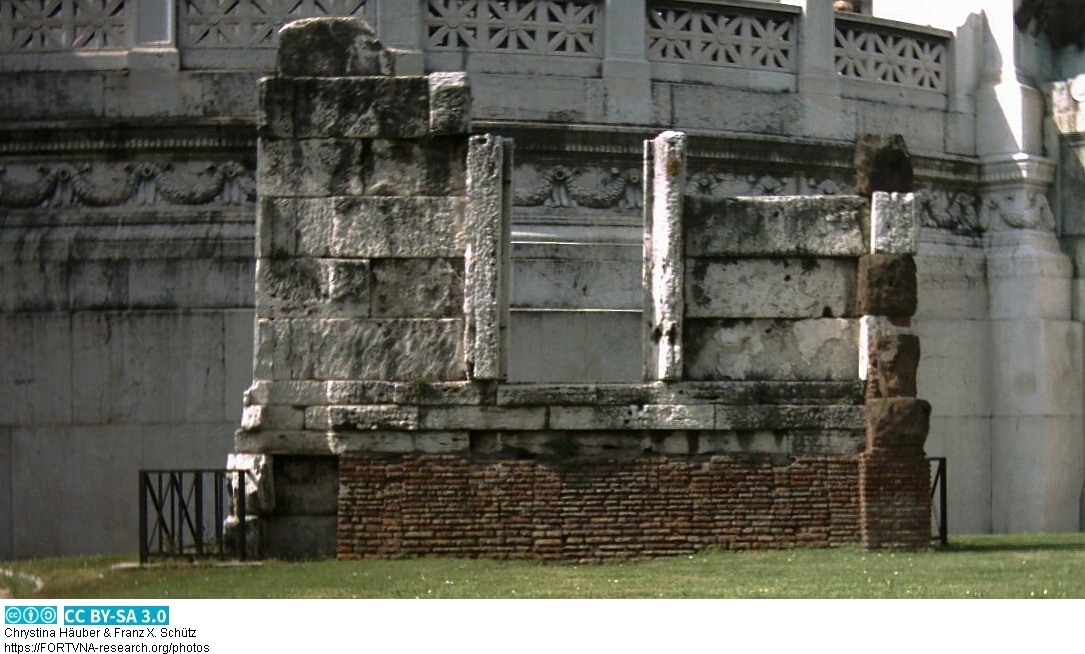
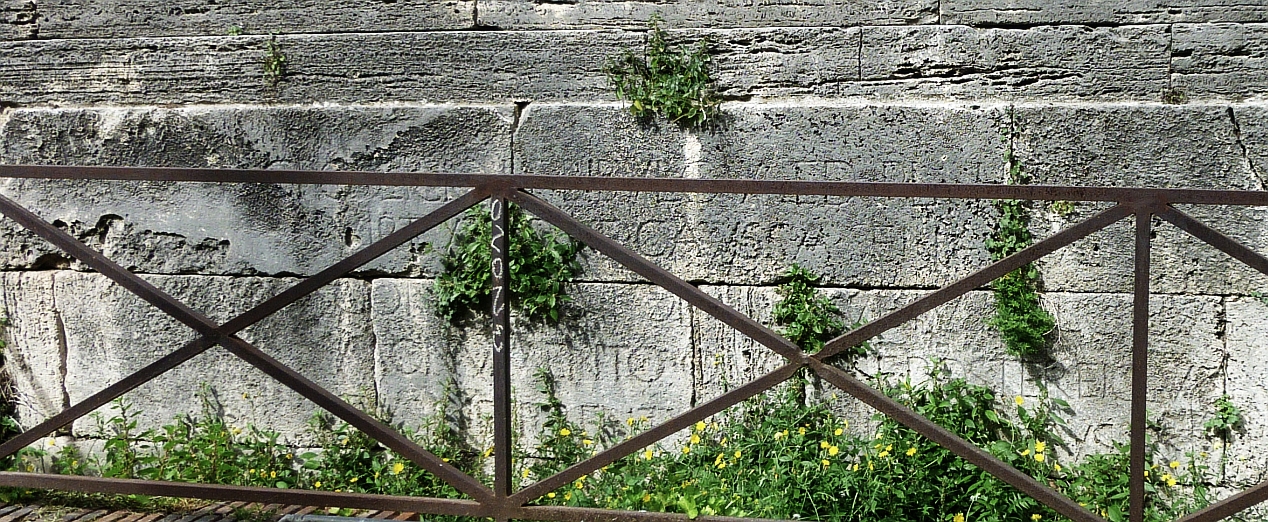
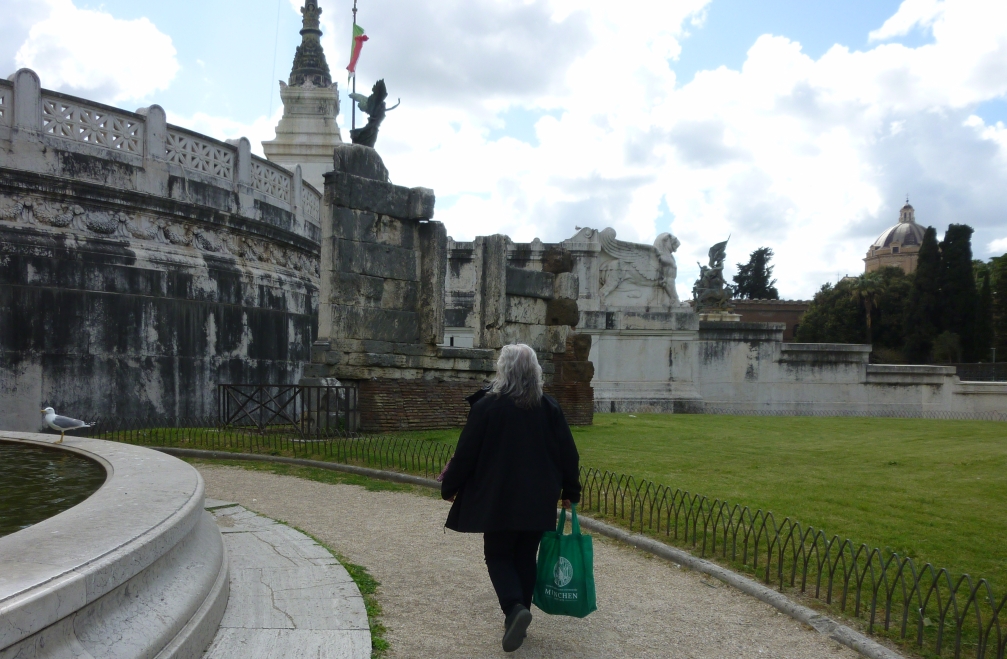
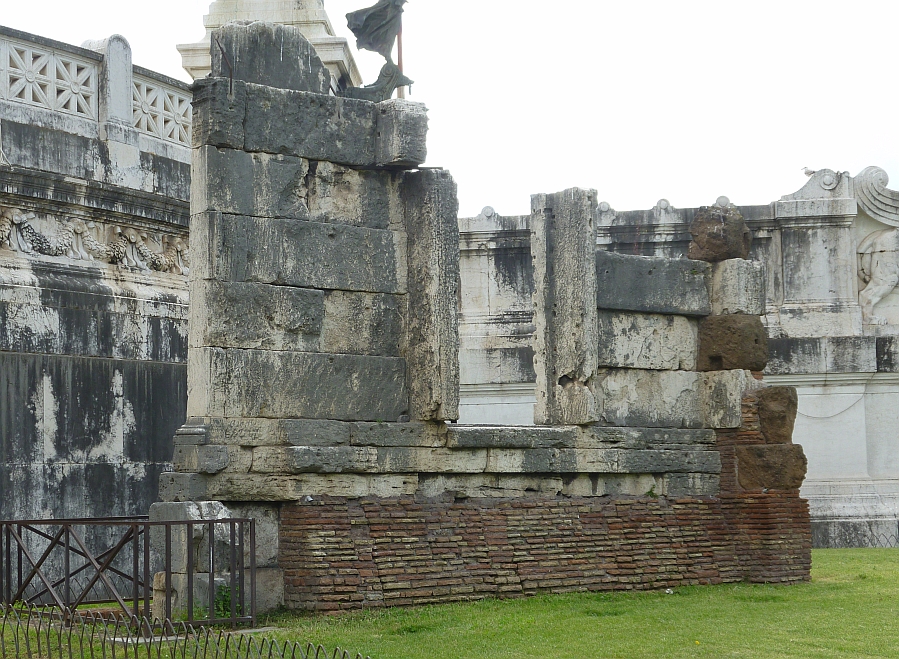
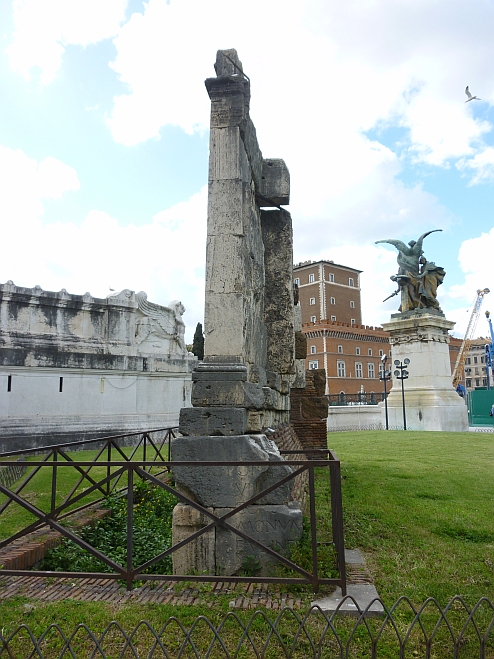
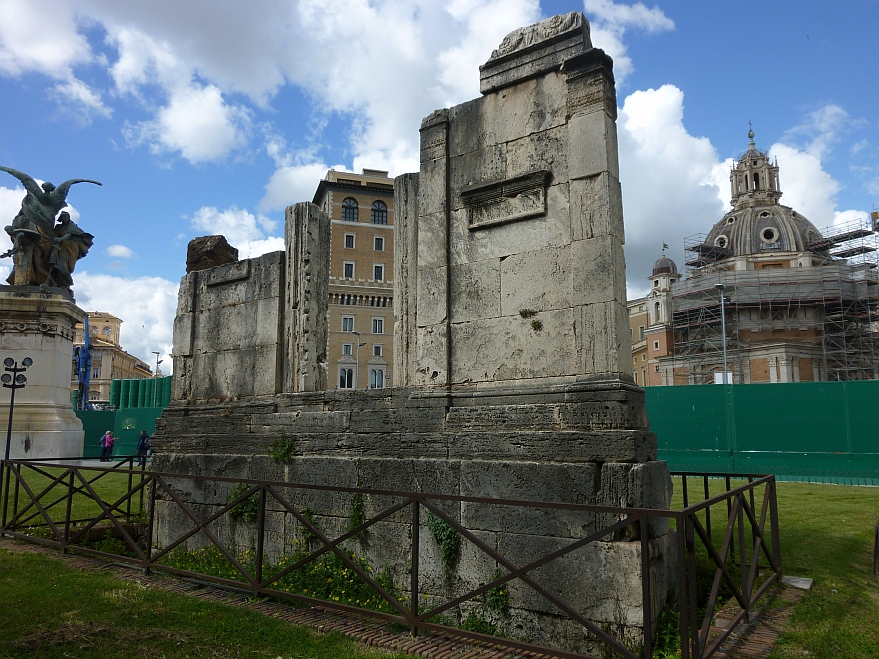
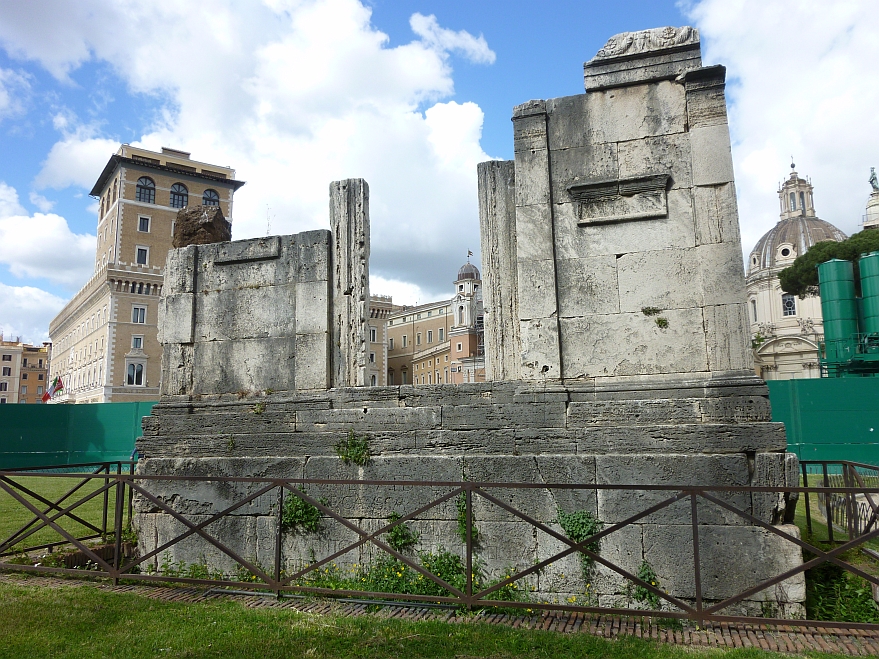
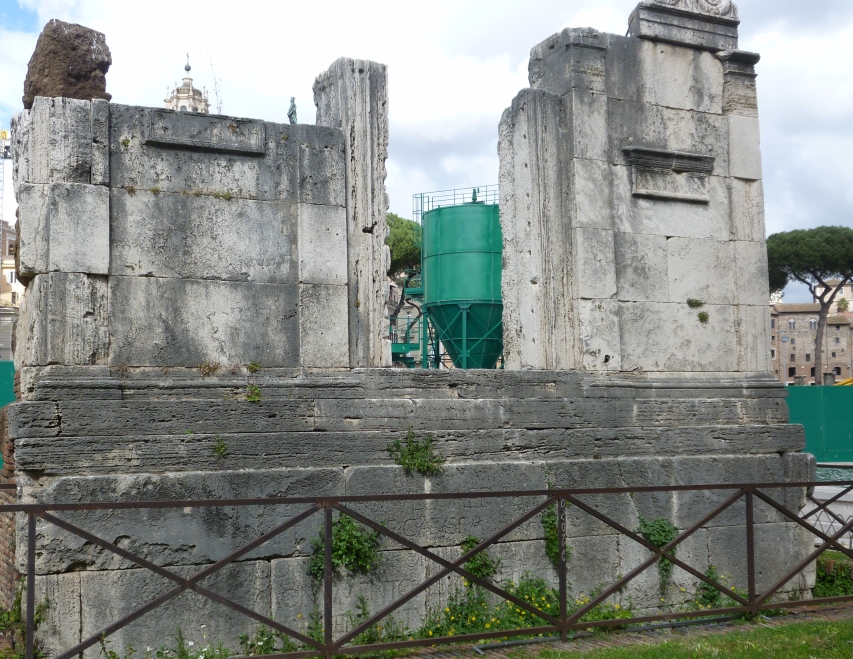
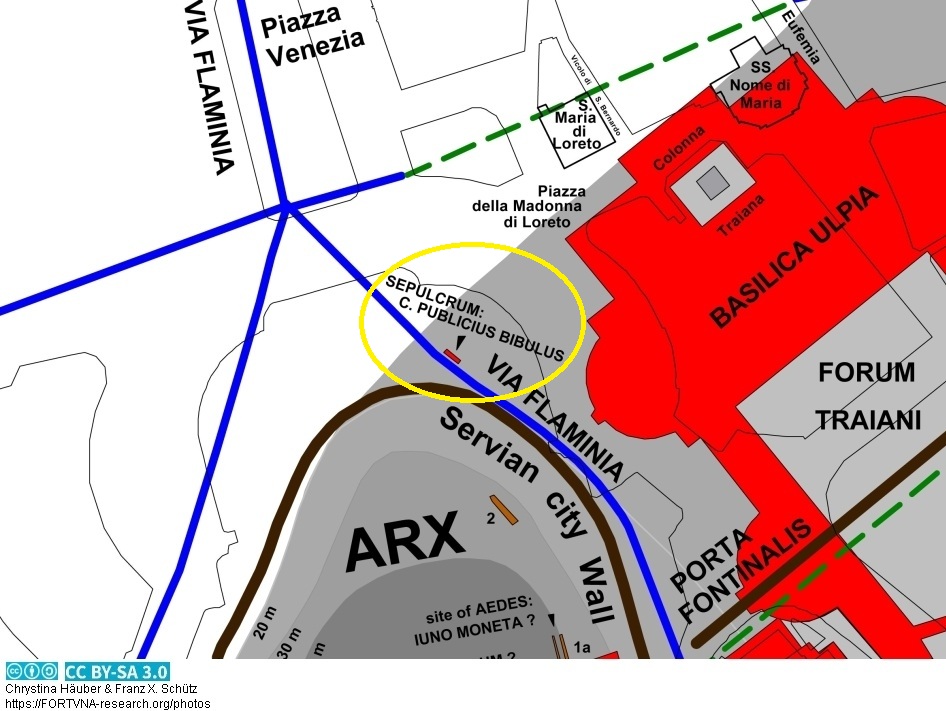
Zitat HÄUBER 2017, S. 190:
"After reaching Via Cesare Battisti/ Piazza Venezia to the north of the "ARX", the northern summit of the Capitoline, the reconstruction of the pomerium of
Claudius by G. Filippi and P. Liverani (2014-2015, Fig. 8) `curves around´ the "SEPULCRUM: C. PUBLICIUS BIBULUS" (cf. here Figs. 3.5; 3.7; 3.7.1,
and infra, p. 584 with n. 307)".
This tomb stood on the east side of the Via Flaminia/ Via Lata.
Zitat HÄUBER 2017, S. 584:
"John Patterson mentions two other tombs on the Via Flaminia within the area discussed here: the still extant sepulcrum of C. Publicius Bibulus and the sepulcrum of the Claudii (which was earlier erroneously located on the Via Flaminia)".
Zitat HÄUBER 2017, S. 585, Fußnote 307:
"both quotes are from J. Patterson: "Via Flaminia", in: LTUR V (1999) 136. Cf. E. La Rocca: 1999, 279: "È quindi verosimile che il sepulcrum dei Claudii fosse alle pendici del Campidoglio verso il Circus Flaminius, non lontano dal templum Bellonae [cf. here Fig. 3.5, labels: CAPITOLINE; CIRCUS FLAMINIUS; AEDES: BELLONA] che, votato da Appius Claudius Caecus, era diventato nel tempo un autentico sacrarium della gens". See also A. Viscogliosi: "Bellona, Aedes in Circo", in: LTUR I (1993) 191. This area is, of course, not located on the Via Flaminia, but La Rocca, op.cit., offers an explanation for Patterson's mentioning of this tomb `on the Via Flaminia´: "Risultano poco fondate vecchie ipotesi (cfr. Platner - Ashby [1929, p. 478]) che identificavano la sepultura Claudiorum con una struttura poco più a N[ord] del sepolcro di C. Publicius Bibulus". Cf. L. Richardson 1992a, 353 s.v. Sep.[ulcrum] Bibuli; A. Gallito: "Sepulcrum: C. Publicius Bibulus", in: LTUR IV (1999) 295, Fig. 147: "L'edificio, i cui resti sono visibili nel Campus Martius (Reg. VII), lungo il lato sinistro del Monumento a Vittorio Emanuele, fu costruito ai piedi del Campidoglio, lungo la strada che usciva dalla porta Fontinalis situata 100 m. più a Sud". The tomb of C. Publicius Bibulus is marked in the photogrammetric data, after which I have integrated it into the "AIS ROMA", cf. Häuber 2014, Map 5, label: SEPULCRUM: C. PUBLICIUS BIBULUS; cf. here Figs. 3.5; 3.7, labels: CAPITOLINE; Servian city Wall; PORTA FONTINALIS; SEPULCRUM: C. PUBLICIUS BIBULUS; VIA FLAMINIA. Cf. G. Pisani Sartorio: "Muri Aureliani: Porta Flaminia", Fig. 197, in: LTUR III (1996) 303-304; p. 304: "Nei restauri di Onorio venne ridotta ad un fornice solo in travertino e le torri semicircolari vennero incapsulate entro basamenti quadrangolari in blocchi di marmo, che conservano iscrizioni dei sepolcri demoliti per la costruzione delle stesse torri (CIL VI 13552, 28067, 30464, 31455, 31689, 31714, 31771, v.[edi] sepulcrum: P. Aelius Gutta Calpurnianus [cf. LTUR IV (1999), 272-273; E. Papi]; sepulcrum: Gallonii [cf. LTUR IV (1999), 289; E. Papi]; sepulcrum: L. Nonius Asprenas [an entry on this tomb does not exist; cf. Platner, Ashby 1929, 481 s.v. Sep.[ulcrum] L. Nonii Asprenatis]) ... La versione ad un solo fornice centrale e all'esterno due tozze torri quadrate costruite con i marmi provenienti dalla demolizione di un vicino sepolcro a forma di piramide è opera di Sisto IV (1471-84)".
Cf. Filippi, Liverani 2014-2015, 82 with ns. 16-18, write: "Non è possibile ripercorrere dettagliatamente tutta la problematica del percorso del pomerio in Campo Marzio, uno dei temi tra i più dibattuti della topografia romana. Sintetizzo brevemente: [with n. 16, quoting: Liverani 2005] per ricostruire la linea pomeriale di Claudio (fig. 8) abbiamo il cippo rinvenuto fuori Porta del Popolo, [with n. 17; with references] da qui al Campidoglio non esistono altri elementi certi, ma possiamo ipotizzare una linea lungo la via Lata, o meglio un po' più a oriente di essa per evitare le sepolture chi si trovavano sul margine della strada", with n. 18: "M. LABROUSSE, in MEFR 54, 1937, p. 188. Si pensi al sepolcro tardorepubblicano con ipogeo sottostante di III sec. d.C. presso S. Maria del Popolo (A. CAMPESE SIMONE, Contributo di un ipogeo cimiteriale tardoromano presso S. Maria del Popolo per la redefinizione dei limiti del pomerio, in ArchCl 44.1992, pp. 81-110) o le piramidi sotto le chiese gemelle di S. Maria dei Miracoli e S. Maria in Montesanto all'imbocco dell'attuale Via del Corso (Carta Archeologica di Roma II, Firenze 1964, D2-3. Cfr. anche C.L. e V. Visconti, Delle scoperte avvenute per la demolizione delle torri della Porta Flaminia, in BCom 5, 1877, pp. 184-252; ID., in BCom 8, 1880, pp. 169-184). I thank Paolo Liverani for providing me with a copy of this article".
Eintrag aus CLAUSS / SLABY zur Inschrift des Grabes des Bibulus:
"Publikation: CIL 06, 01319 (p 3134, 3799, 4679, 4772) = CIL 06, 31599 = CIL 01, 00834 (p 728, 839, 957) = Gordon 00002 = ILLRP 00357 (p 327) = D 00862 = BCAR-2000-39 = AE 2000, +00135 = AE 2000, +00149 = AE 2005, +00026
Datierung: -100 bis -51
EDCS-ID: EDCS-17800474
Provinz: Roma
Ort: Roma
C(aio) Poplicio L(uci) f(ilio) Bibulo aed(ili) pl(ebis) honoris / virtutisque caus{s}a senatus / consulto populique iussu locus / monumento quo ipse poster{e}ique / eius inferrentur publice datus est"
Literatur
ASHBY, T., FELL, R. A. L. (1921): The Via Flaminia. In: The Journal of Roman Studies, Vol. 11 (1921), S. 125-190, PLATES IX-XVIII.
CLAUSS / SLABY: Epigraphik-Datenbank. Manfred Clauss / Anne Kolb / Wolfgang A. Slaby / Barbara Woitas, online at: https://db.edcs.eu/epigr/epi.php?s_sprache=de (11.6.2023).
HÄUBER, C. (2017): Augustus and the Campus Martius in Rome: the Emperor's Rôle as Pharaoh of Egypt and Julius Caesar's Calendar Reform; the Montecitorio Obelisk, the Meridian Line, the Ara Pacis, and the Mausoleum Augusti in Honour of Eugenio La Rocca on the Occasion of His 70th Birthday. With Contributions by Nicola Barbagli, Frederick E. Brenk, Amanda Claridge, Filippo Coarelli, Luca Sasso D'Elia, Vincent Jolivet, Franz Xaver Schütz, and Raimund Wünsche and Comments by Rafed El-Sayed, Angelo Geißen, John Pollini, Rose Mary Sheldon, R.R.R. Smith, Walter Trillmich, Miguel John Versluys, and T.P. Wiseman. FORTVNA PAPERS Volume II, 2017, edited by Franz Xaver Schütz and Chrystina Häuber. München: Hochschule München.
TOMASSETTI, A. (2000): Un edificio antico lungo il clivus "Argentarius": il monumentum di Gaio Publicio Bibulo. In: BCom (Bullettino della Commissione Archeologica Comunale di Roma), Vol. 101 (2000), S. 39-80.
Datenschutzerklärung | Impressum